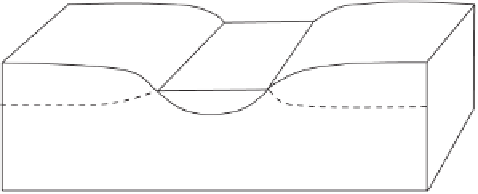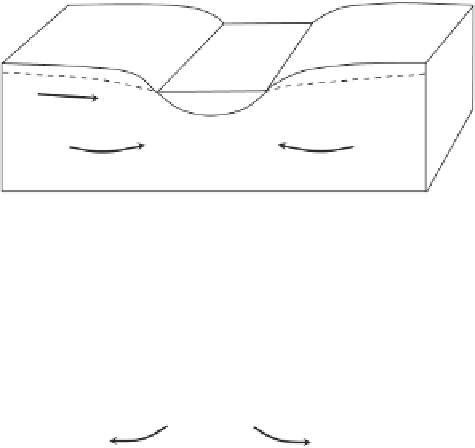Environmental Engineering Reference
In-Depth Information
(A)
Unsaturated
zone
Water table
Flow direction
Shallow
aquifer
Gaining stream
(B)
Unsaturated
zone
Water table
Flow direction
Losing stream
Figure 9.2
A gaining stream (A) that receives water from an underground aquifer and a losing stream
(B) that loses water to the groundwater system.
From Winter et al., 1998.
Freshwater available for consumption
The planet contains a fixed volume of water that is constantly recirculated, but the portion of
freshwater that humans can tap into is limited to aquifers, surface water, and rainwater. Also
with the adequate technology and the use of significant amounts of energy, seawater can be
converted into drinkable water by desalinization.
Extraction from aquifers
Aquifers have provided abundant water for food production and consumption in places where
water surface is not available. Examples are the Mexico City Aquifer, the High Plains Aquifer
in the US Midwest, the Nubian Sandstone Aquifer in the eastern end of the Sahara Desert, and
the Great Artesian Basin in Australia.
Water is extracted from aquifers with pumps through wells of variable depth. Usually
shallow wells are used for domestic water use and in subsistence agriculture; however, for
municipal, irrigation, and industrial uses, deeper wells in the order of hundreds of meters
generally need to be drilled.
The main advantage of aquifer water is its availability almost everywhere, even in dry
places that receive little or no rainwater. A second advantage is that water pumped from an
aquifer needs minimal treatment in comparison with surface water. Generally, groundwater is
low in suspended solids, which is normally eliminated by filtration, and unless the aquifer is








